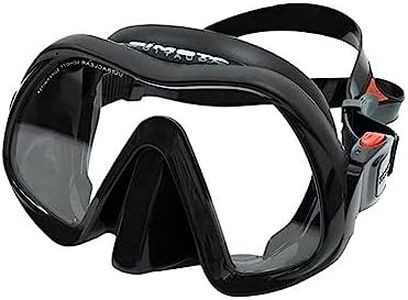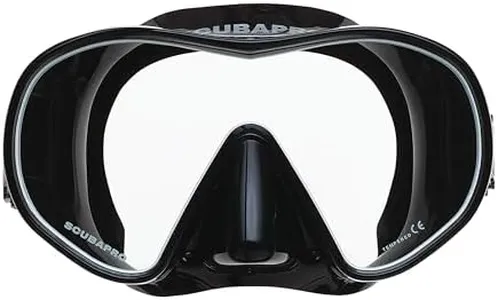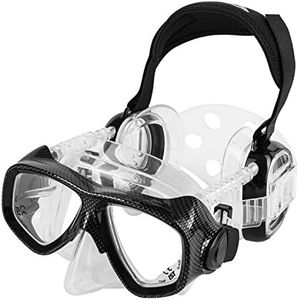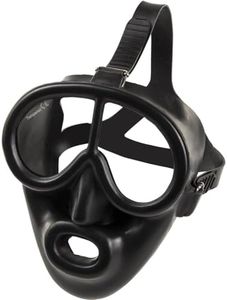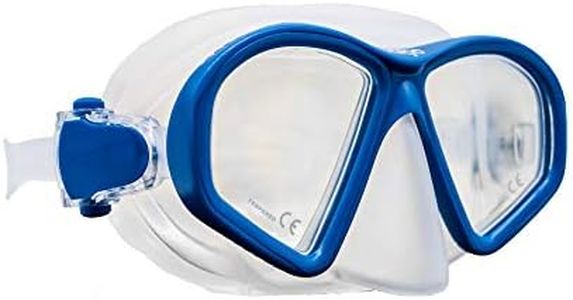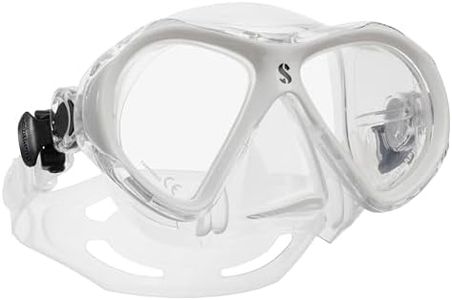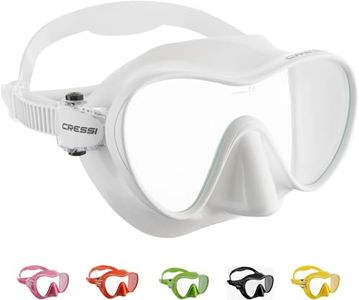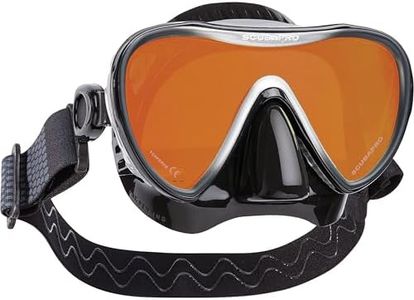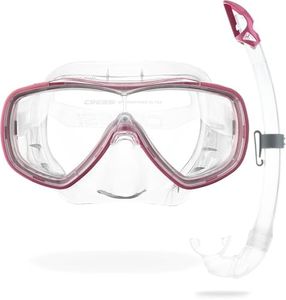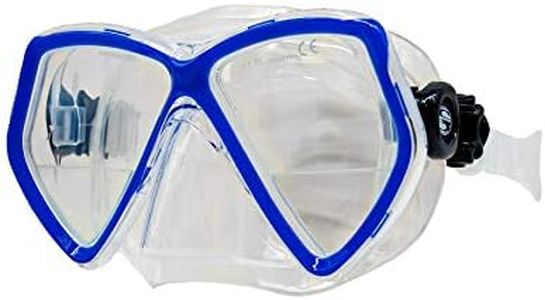We Use CookiesWe use cookies to enhance the security, performance,
functionality and for analytical and promotional activities. By continuing to browse this site you
are agreeing to our privacy policy
10 Best Scuba Masks
From leading brands and best sellers available on the web.Buying Guide for the Best Scuba Masks
Choosing the right scuba mask is essential for a comfortable and enjoyable dive. The mask connects you to the underwater world, so it’s important to choose one that fits well and matches your needs. Rather than going for the most stylish or popular option, focus on how the mask feels on your face and how its features suit your diving environment and activities. Try on a few, learn what the key features are, and reflect on how and where you’ll use it before making your decision.Fit and SealFit and seal refer to how well the mask hugs your face and keeps water out. A good seal is crucial because even the most high-tech mask is useless if water leaks in. To check fit, place the mask on without using the strap, inhale slightly through your nose, and see if the mask sticks to your face with no gaps. Masks come in a range of skirt shapes and sizes—some designed for narrower faces, others for broader ones, and some with softer silicone for comfort. Prioritize a snug fit that feels comfortable and doesn’t leave pressure points, as the best specs or features can't make up for a mask that leaks or pinches your face.
Lens TypeLens type determines your field of view, how clearly you see, and sometimes how compact the mask feels. Masks can have single, double, or even multiple lenses. Single-lens masks offer a wide, uninterrupted view, while double-lens masks sit closer to your eyes and can be easier for prescription lens swaps. Some lenses have extra coatings or colors to enhance contrast or reduce glare. When picking lens type, think about whether you need better peripheral vision, plan to use corrective lenses, or care about glare from bright conditions.
VolumeMask volume means how much air space is inside the mask. Low-volume masks sit closer to your face and are easier to clear if water gets inside; they also make equalization simpler. These are great for freediving or for divers who want minimal drag. Higher-volume masks can feel roomier and sometimes offer a broader view, but require more effort to clear. If you’re new to diving, a medium-volume mask can be a good starting point, balancing ease of use with comfort.
Skirt MaterialThe skirt is the soft, flexible part that seals the mask to your face. Most modern masks use silicone for the skirt, which is durable, comfortable, and hypoallergenic. Cheaper masks might use rubber, but silicone is superior for comfort and lifespan. The thickness and softness of the skirt can vary—softer skirts often seal better on different face shapes. If you have facial hair or sensitive skin, pay extra attention to skirt quality and softness for a secure, comfortable fit.
Strap and AdjustmentThe strap keeps your mask in place while diving. Look for straps that are easy to adjust, even with gloves, and buckles that allow small, precise changes in tension. Some masks offer split straps for a more secure fit. If you often wear a hood or have long hair, you might prefer comfort features like neoprene strap covers. Choose a mask that is simple to tighten and loosen so you can make adjustments underwater if needed.
Field of ViewField of view means how much you can see side-to-side and up-and-down without turning your head. Masks with larger or specially shaped lenses tend to offer more visibility, which can make exploring underwater more enjoyable and help with situational awareness. If you often dive in environments with lots to see around you, prioritize a mask with a wider field of view.
Prescription Lens CompatibilityIf you wear glasses, being able to add prescription lenses to your dive mask can be a game changer. Some masks are designed for easy lens swaps, either by you or at a dive shop. Check how easy it is to get and install corrective lenses for your chosen mask if you need vision correction.

